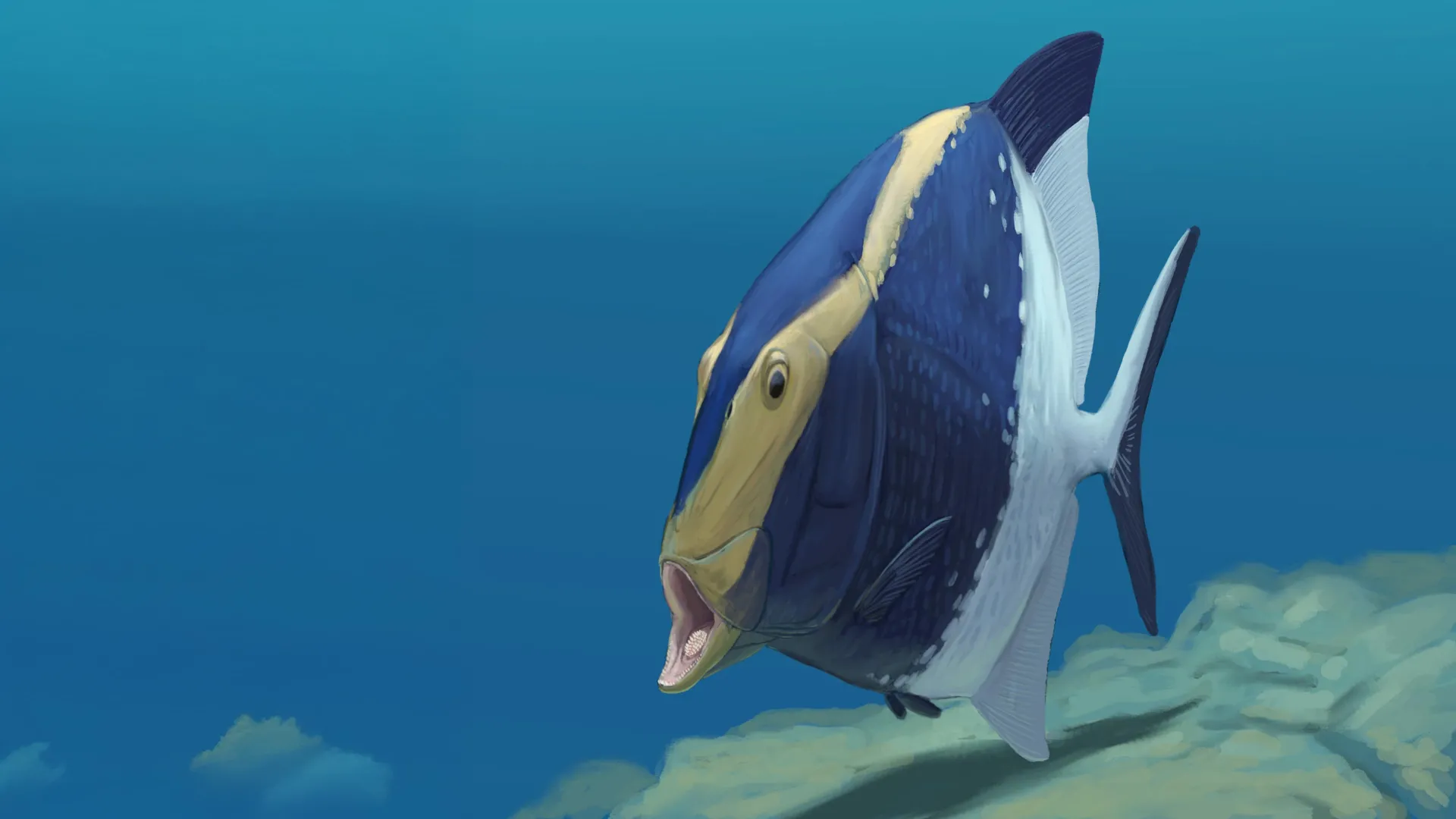Fossil reveals a 310-million-year-old fish that ate with a hidden second jaw
- Date:
- September 4, 2025
- Source:
- University of Birmingham
- Summary:
- Scientists uncovered a 310-million-year-old fish fossil with a “tongue bite,” teeth on the roof and floor of its mouth that worked like a second jaw. This adaptation, previously thought to have appeared much later, shows how fish rapidly experimented with new feeding strategies after mass extinction.
- Share:

Experts have uncovered the earliest known example of a fish with extra teeth deep inside its mouth – a 310-million-year-old fossilized ray-finned fish that evolved a unique way of devouring prey.
Platysomus parvulus had a unique way of eating never seen in ray-finned fish from that time – a ‘tongue bite’, using a special set of teeth on the floor and roof of the mouth to help it crush and chew tough food like shells or insects.
Most fish today use their jaws to bite and chew, but some also have tongue bites, which work like a second set of jaws. Until now, the oldest known fish with such a dental arrangement lived about 150 million years later
Publishing their findings on September in Biology Letters, the international research team used high-resolution CT scanning to reconstruct the internal anatomy of the fossil, which was discovered in Carboniferous rock formations in the UK county of Staffordshire.
Supported by the Royal Society, the National Science Foundation, and the Natural Environment Research Council, the researchers discovered a sophisticated arrangement of tooth plates on the roof of the fish’s mouth and the gill skeleton.
Lead author Professor Sam Giles, from the University of Birmingham, commented: “Our discovery helps us understand how fish evolved after the End-Devonian Mass Extinction, which wiped out many species. After this extinction event, fish started to change and develop new body shapes and ways of feeding.
“Tongue bites have evolved many times in different fish groups - including in modern ones such as trout and bonefish, demonstrating that it is a useful tool that helps fish eat a wider variety of food and survive in different environments.”
The tongue bite mechanism involves opposing sets of teeth—one on the roof of the mouth and another on the gill skeleton—that work together to grip and crush prey.
The Platysomus fossil studied is uniquely preserved in 3D, allowing researchers to peer inside its mouth and digitally dissect its anatomy. This reveals a multi-part lower tooth plate and narrow upper plate, both bearing a single layer of pointed teeth—suggesting a transitional stage in the evolution of more advanced tongue bite systems seen in later fish like Bobasatrania.
Co-author Dr Matthew Kolmann, from the University of Louisville, commented: “Later fish, like the Bobasatrania group, had more advanced tongue bites and did not use their jaws at all, relying on their tongue bite to crush hard food. Platysomus parvulus is like a missing link between simple jawed fish and more advanced tongue-biters.”
The discovery supports a model of rapid innovation in early ray-finned fishes following the End-Devonian Mass Extinction, with ray-finned fishes' experimentation with new feeding strategies.
Co-author Prof Matt Friedman, from the University of Michigan, commented: “Tongue bites are just one of many feeding innovations that emerged during this time. This fish represents a key evolutionary step and helps us understand how ancient ecosystems functioned and how modern fish lineages came to be.”
Story Source:
Materials provided by University of Birmingham. Note: Content may be edited for style and length.
Journal Reference:
- Sam Giles, Matthew Kolmann, Matt Friedman. Tongue-bite apparatus highlights functional innovation in a 310-million-year-old ray-finned fish. Biology Letters, 2025; 21 (9) DOI: 10.1098/rsbl.2025.0270
Cite This Page: